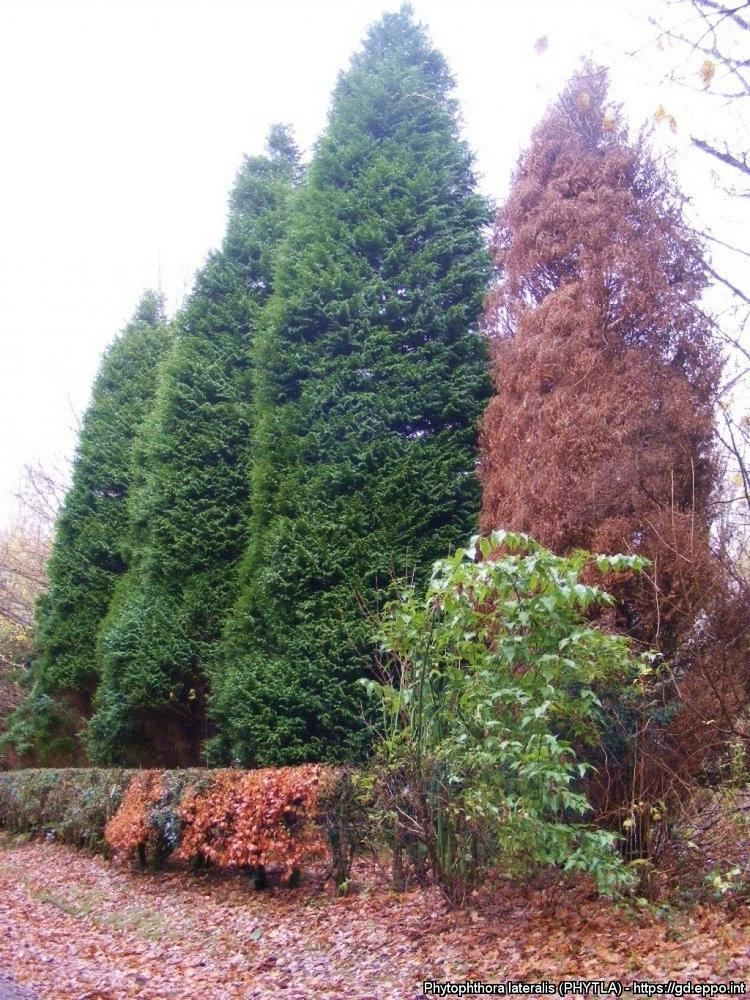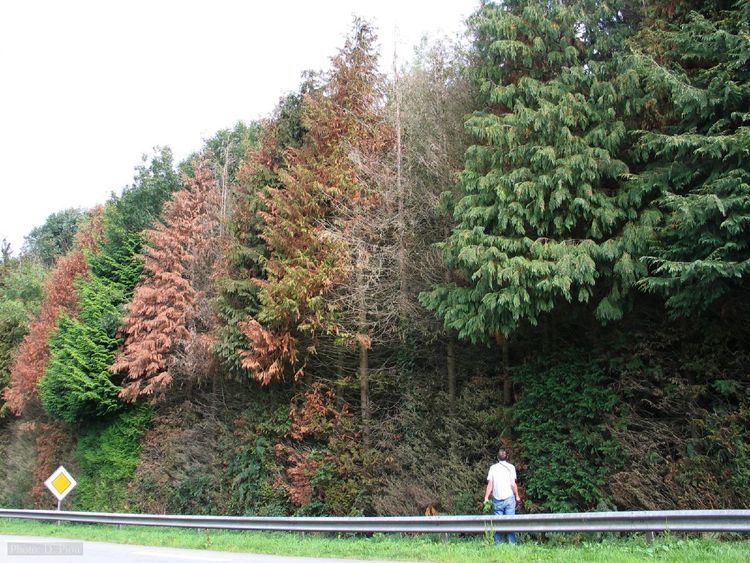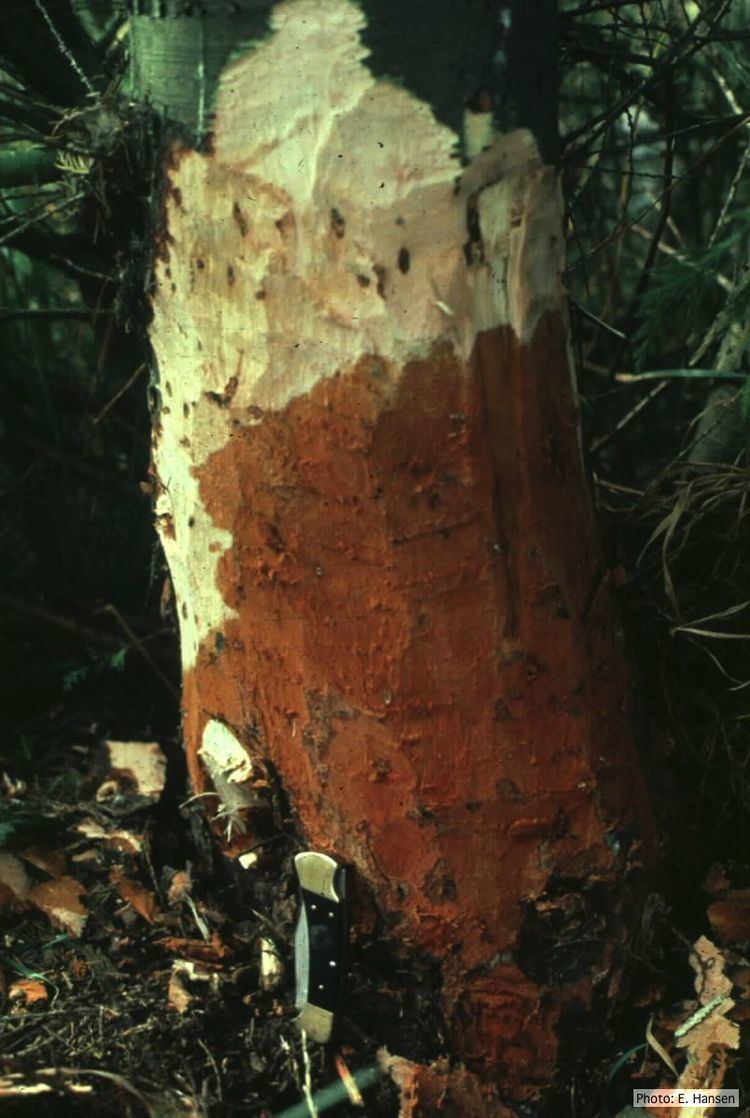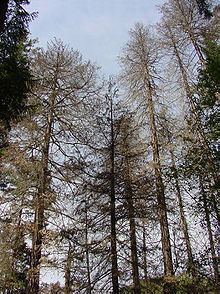Superphylum Heterokonta Higher classification Phytophthora | Subclass Incertae sedis Family Pythiaceae Scientific name Phytophthora lateralis Rank Species | |
 | ||
Similar Phytophthora, Chamaecyparis lawsoniana, Phytophthora kernoviae, Phytophthora ramorum, Phytophthora cambivora | ||
Phytophthora lateralis (Tucker & Milbrath) is a soil-borne plant pathogen that causes cedar root disease in Lawson cypresses, called Port Orford cedar trees (Chamaecyparis lawsoniana [A. Murray]) in Northern USA. This pathogen was first noted to cause disease in around 1920 on nursery stock near Seattle WA. Pacific yew (Taxus brevifolia Nutt.) is also vulnerable to P. lateralis but less susceptible than Port Orford cedar trees, and tree mortality has only been observed in areas where C. lawsoniana trees were also infected. Asiatic species of Chamaecyparis are generally described as resistant to P. lateralis, although this pathogen is occasionally isolated from Chamaecyparis obtusa (Siebold & Zucc.) Endl. (Hinoki cypress) in nurseries.
Contents

Mode of infection

The most frequent symptoms of disease caused by P. lateralis are root and collar lesions. Trees become infected by their roots coming into contact with the zoospores in the soil or water. Hyphae then develop in larger roots and into the root collar where they kill the inner bark. Infrequent foliar infections resulting in branch lesions, have also been reported.
Symptoms
The foliage of infected trees initially appears slightly lighter in colour than that of healthy trees. The whole canopy turns then to pale green, yellow and then light-brown when the tree is dying. As the pathogen extends from the roots and root collar up the trunks, a sharp margin is visible between necrotic phloem, discoloured to cinnamonbrown and healthy cortical tissues.
Distribution

Until recently, the known distribution area of P. lateralis was limited to Washington, Oregon and California where it mostly occurs. In 2009, the pathogen was detected in soil of natural forests of C. obtusa in Taiwan, in agreement with a possible Asiatic origin for this species. Recent outbreaks have been recorded on C. lawsoniana in France, Scotland, Northern Ireland, and the Netherlands.
Possible risks

Since C. lawsoniana and T. brevifolia are both key components of ecosystems on the Pacific Northwest Region of North-America, P. lateralis is threatening the ecological and economical values of forests where the pathogen occurs. In Europe, where C. lawsoniana is a widespread ornamental tree, P. lateralis could represent a serious threat, especially for the ornamental plant industry if it becomes established. Because of its potential economic impact, this pathogen was added in 2006 to the A1 list of exotic species that the EPPO recommends to regulate as quarantine organisms.
